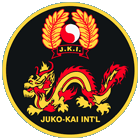.UNDERSTANDING KATA

The practice of kata is, and always has been, an integral aspect of martial arts training. Traditionally, kata has been used to transmit the syllabus of a system from teacher to student—generation after generation. Kata serves the purpose of instilling certain fundamental skills that are necessary to understand the underlying principles of technique rather than to merely teach specific combat responses to specific combative situations.
Basically, kata may be defined as a combination of offensive and defensive techniques organized systematically into a continuous series of movements. Kata is designed to instill such important aspects of speed, timing, coordination, balance, correct execution of technique and quick reflexes. The great thing about kata is that it can be practiced anywhere and at any time. No special equipment is necessary. Regular kata practice builds proper breathing and aides in strengthening muscles and bones, increases stamina, and promotes overall good health.
Many state they don’t do kata in their arts, yet if you examine their training methods closely, you’ll note that they practice prearranged forms even in the throwing arts. Almost all traditional martial arts and ways contain kata. Instructors and students alike have always taken great pride in their ability to execute beautiful and well-coordinated kata, which is a tribute to their training and their instructor.
Basically, kata may be defined as a combination of offensive and defensive techniques organized systematically into a continuous series of movements. Kata is designed to instill such important aspects of speed, timing, coordination, balance, correct execution of technique and quick reflexes. The great thing about kata is that it can be practiced anywhere and at any time. No special equipment is necessary. Regular kata practice builds proper breathing and aides in strengthening muscles and bones, increases stamina, and promotes overall good health.
Many state they don’t do kata in their arts, yet if you examine their training methods closely, you’ll note that they practice prearranged forms even in the throwing arts. Almost all traditional martial arts and ways contain kata. Instructors and students alike have always taken great pride in their ability to execute beautiful and well-coordinated kata, which is a tribute to their training and their instructor.
